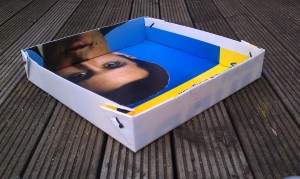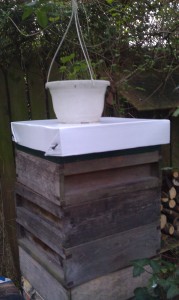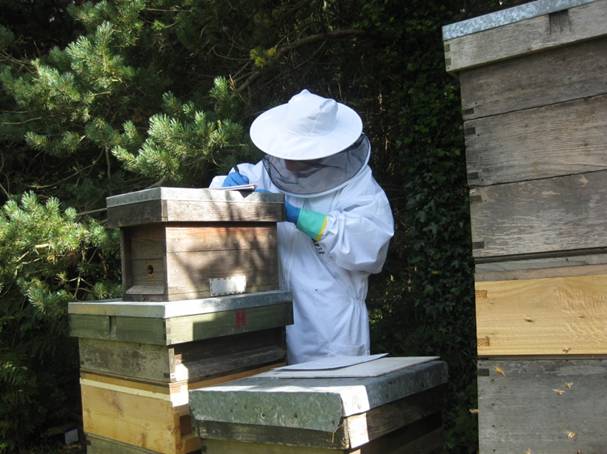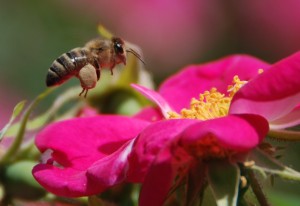The internet, for the 77% of the Irish population who use it (CSO, 2012) has changed our lives. The way we communicate, watch movies, read the news, shop, learn and solve problems has been transformed. Best of all, once you have paid for the computer and the broadband, it’s free thereafter. CSO statistics tell us that while the older generation have been late to the internet, they are catching up fast. To the author, there seems to be a wide range of internet skills and knowledge among beekeepers in Ireland – a few are building websites, most are confident using the internet, and some are just starting out. The world wide web can be a bewildering place for the newcomer – just as the the skills of beekeeping can appear daunting to the beginner with bees.
As the pace of change in beekeeping increases with new pests & diseases, new treatments, new laws and new debates (not forgetting the same old arguments, now conducted online!), the internet is becoming more and more important for the beekeeper in Ireland. With this in mind, here are a few of the internet resources that might be useful to the reader of an
Beachaire.
1. The Irish beekeeping group
Created by Tom Barrett in June 2001, this is an old-style email group: you send an email to the group list, and typically every member receives your email. It is on the wane these days. In its heyday the mid-2000s its members regularly posted over 400 messages a month, but in the last year the list averaged about 25 messsages a month. It’s on the way out.
Web address: http://uk.groups.yahoo.com/group/irishbeekeeping/
To subscribe, send an email to irishbeekeeping-subscribe@yahoogroups.co.uk
2. Websites with useful information
Of course, there are tons of useful beekeeping websites. Most of the equipment suppliers have websites, and many of the local associations have too. Most beekeeping associations have at least a basic website containing information on events and contact details – some contain interesting articles or items like a library catalogue. FIBKA, BIBBA and UBKA all have websites to give information to the public and to members. For this author, two websites stand out as particularly useful: The late Dave Cushman’s wonderful beekeeping site containing thousands of useful pages is at http://www.dave-cushman.net/ and the
UK’s National Bee Unit at www.nationalbeeunit.com/ holds some high-quality advisory leaflets, training manuals & factsheets.

A wasp trap design taken from the excellent website created by the late Dave Cushman
Of course, the problem is that on the internet, any old fool can set up a website – and many do!. As a result, the quality of the material varies a lot. With all the fads and fashions that sweep the beekeeping world (FGMO, small cell beekeeping, Warré hives, urban beekeeping… I could go on!), one must be careful to choose sites that are reputable. Nowhere is this more true than on Youtube. It contains some wonderful videos to learn from – and some absolute rubbish! Caveat visitor.. At the other end of the quality scale is the
International Bee Research Association – subscribers can search for articles and read back issues of their academic journals. See www.ibra.org.uk. No list of internet links is every complete or comprehensive, but this one from the Dublin beekeepers might be a good place to start:
http://dublinbees.org/want-to-learn-about-beekeeping/links/
3. Social media.
Social media is what we call the internet-based services where we share our news and chat with people – but unlike email, what you share can be seen by your friends – so if I post a picture of a swarm that I have just hived, my beekeeping friends can see it and comment on it. They are free of charge, though expect to see advertising. The biggest of the social media is Facebook, with about half of the Irish population registered (though far fewer use it regularly). Facebook is also host to a number of beekeeping groups – including the ‘Beekeepers of Ireland’ group.

One of the discussions on the ‘Beekeepers of Ireland’ Facebook group
Created in August 2012, our Facebook group has 189 members at the time of writing (October 2013) – and that number is growing every week. It hosts a wide range of discussions – questions from beginners, debates on black bees, announcements of beekeeping events, request for help, sharing ideas and news and useful links. The group won second prize in class 40 of the National Honey Show 2013. The group is open to all comers. If you are a Facebook member, it is easy to find by searching within Facebook for ‘Beekeepers of Ireland’.
Join: https://www.facebook.com/groups/bees.ireland/
Linkedin.com is often referred to as ‘Facebook for business’ – and your author finds it an invaluable resource at work. It too hosts some beekeeping groups, including the lively and cosmopolitan ‘Beekeeping worldwide’ group. It’s probably not worth joining if
you’re not working (unless you are looking for a job, but that’s another story) – but if you are, just go to linkedin.com, log in and search for ‘Beekeeping worldwide’.
4. Online forums (yes, I know, it should be ‘fora’!).
Another creation of the internet is the online forum. Forums exist to facilitate discussion on particular topics. Typically, anyone can read the discussions in the forums, but you need to register (free) to contribute. A couple that seem to be popular in Britain are http://www.beekeepingforum.co.uk/ and the Scottish http://www.sbai.org.uk – it’s a shame we don’t have such a thing in Ireland yet. The great advantage of fora over Facebook & Linkedin is that the make it much easier for members to have multiple conversations at the same time.
Well worth checking out.
There are many more useful places on the internet, so if you know of other useful sites, tell the author – and if you don’t, then do give these a try!
Simon Rees


















